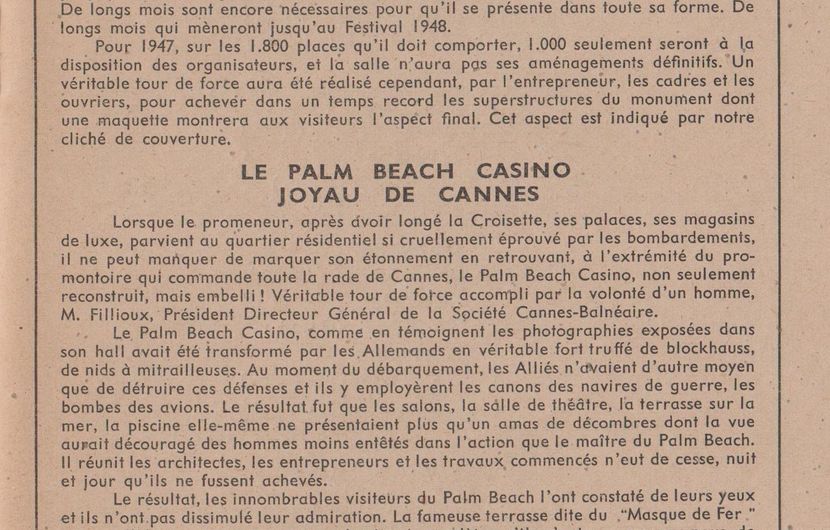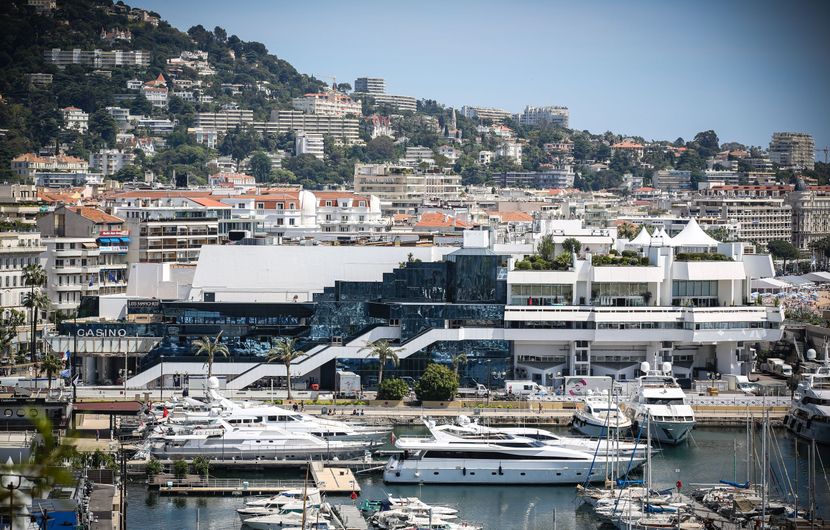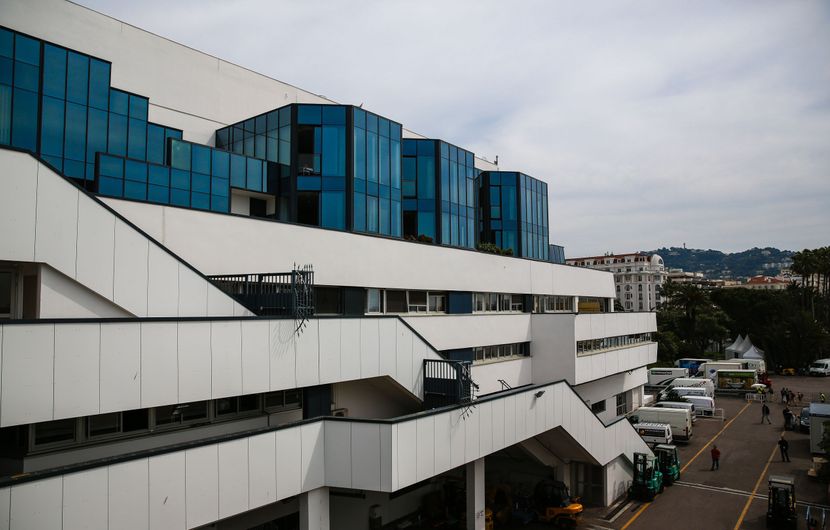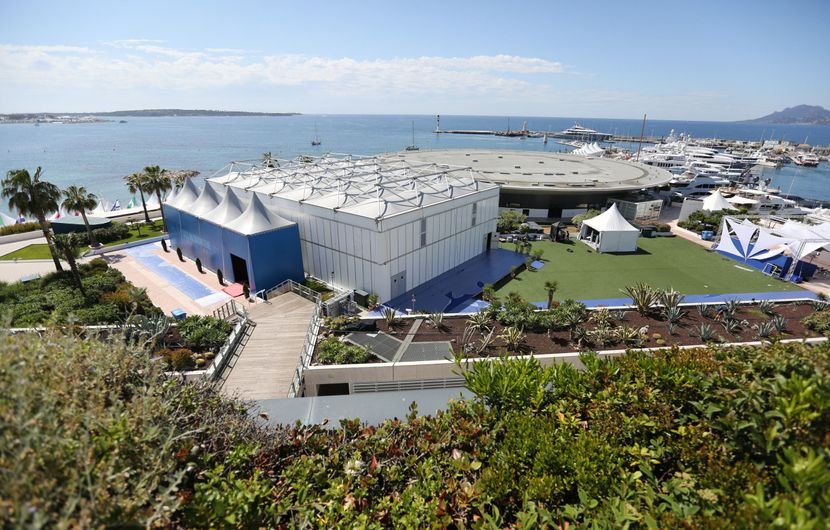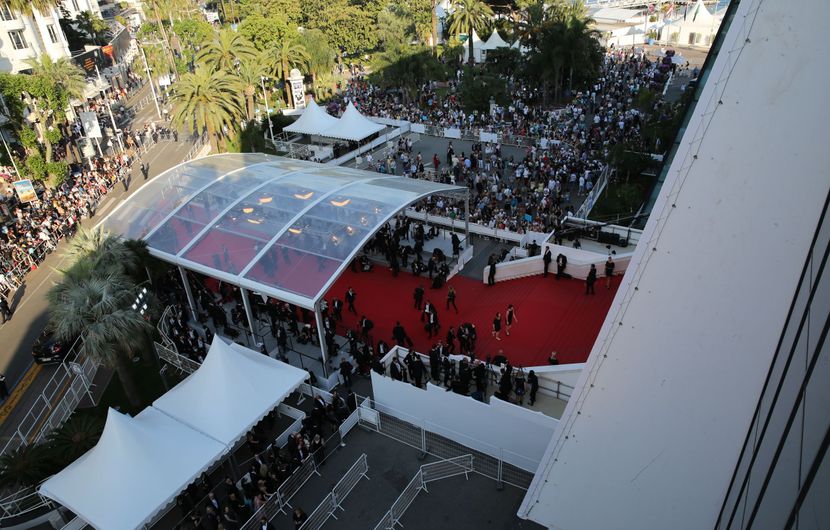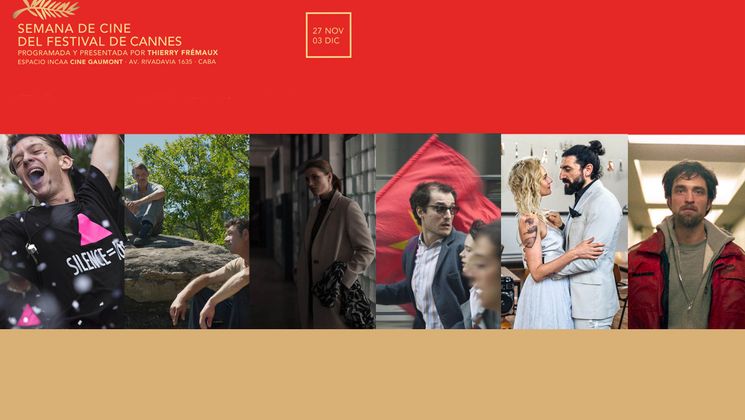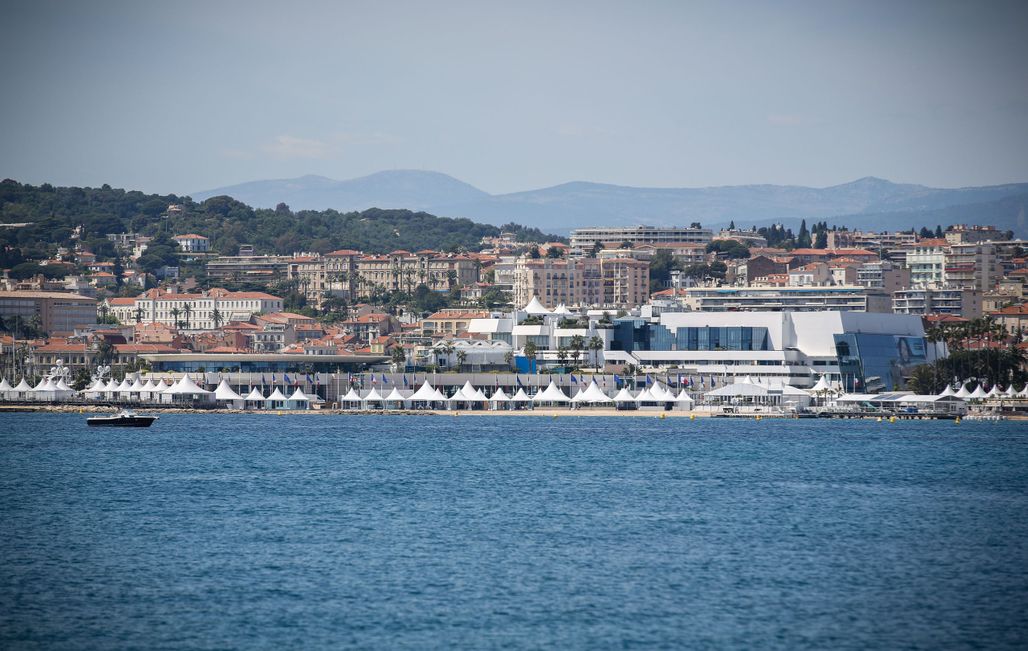
The Festival and its venues

The International Film Festival, the jewel in Cannes Bay for seven decades, has boasted a series of venues down the years Let’s take a little architectural adventure tour, from the Municipal Casino to the Palais des Festivals, of an event which over the decades has redrawn the lines of the town that serves as its prestigious backdrop.
A cinema hall at the Municipal Casino
From the beginning in 1939, Cannes was chosen as the Festival venue for its luxurious feel and tourist charms. Henry Gendre, the manager of the Grand Hotel and father of the actor Louis Jourdan, and Georges Prade who lobbied for the interests of the Riviera up in Paris circles, worked hard to help Cannes win the bid. In this cosmopolitan city famed for its splendid hotels, the Festival was seen be an opportunity to extend the tourist season. The town’s ability to rapidly convert its Casino into a projection room to match the occasion was a major asset in the eyes of the government. And so on 31 May 1939, Cannes won the right to host the event, a mere three months before the planned inauguration date.
Cannes had boasted a casino since 1907. In France, the law limited gambling venues to the coastal resorts and to have a casino was a significant tourist attraction. The Cannes casino, located at the beginning of the Croisette, was extended at the end of the first World War. With its new Ambassadors Salon, it rapidly became the place to be seen for high society tourists.
In 1939, when it won the right to host the event, the town council originally decided to convert this prestigious establishment’s main space into a cinema hall: 1,000 chairs were installed and the best audiovisual equipment was bought to turn the Festival into a premier showcase for cinematographic technology. The little theatre in the Casino was also converted into a smaller projection room, reserved for journalists and the Jury. It was here in 1939 that the only screening took place – The Hunchback of Notre-Dame by William Dieterle – a few days before the outbreak of war which resulted in the postponement by several years. of the first Festival.
The ambitious Palais Croisette
From 1946, with the official reprise of the event’s organisation, the question of building a dedicated venue, which had been mooted since 1940, became impossible to put off any longer. The town council tried to negotiate a deal to take over the land belonging to the Cercle Nautique for the building, but local and international circumstances delayed the project and the 1946 Festival took place in the Casino, as initially planned for the 1939 event.
Following the success of the first season, Philippe Erlanger negotiated with Venice to alternate between the two cities on an annual basis, and so in 1947, it was the Mostra’s turn to host the international event and Cannes had to make do with a national film gathering. And yet the Festival de Cannes welcomed several nations that year.
On the infrastructure side, the Franco-Italian prevarications over the date of this second festival suggested there was no pressing need to build a new Palais… In those years the national reconstruction effort also raised the problem of subsidies, which the State was keen to cap. Nevertheless, at a meeting of the Municipal Council, Dr Picaud, the town’s mayor, borrowed 110 million francs to equip his town with a Palais, in order to help it become one of the world capitals of the silver screen. The project was entrusted to the architects Gridaine and Nau, who were experienced in designing cinema halls, and managed by the entrepreneur Zincano. There were plans for tea rooms, American bars, a luxurious restaurant, a solarium, a light-filled swimming pool, a dancefloor and space for two bands…
On 20 May 1947, the building site got underway. The Cercle Nautique was demolished and construction work on the Palais began. But the work was hampered by a series of material and financial pitfalls. Deliveries were delayed, the metal framework arrived over 20 days late and the borrowed funds proved insufficient. But the challenge to get everything ready for the opening on the 12th September outweighed these vicissitudes and the teams worked day and night to reach their objective.
At the opening on the scheduled date, on a stage beautifully decorated with flowers, workmen in overalls were given a standing ovation by guests in their formal attire. The building which would eventually host the event for the next 33 years was not completely finished: the room had only 1000 chairs out of the 1800 initially planned, the balcony was not completed, and the number of offices reserved for the organization was largely insufficient. On the final day, during a violent storm, the temporary roof flew off, forcing festival-goers to return to the Municipal Casino to wait for the award ceremony.1
In 1948, the Festival was cancelled for budgetary reasons and the completion of the Palais Croisette slowed down. It was not until the first day of the 1949 season that the building could finally be inaugurated by the then under-secretary of State and Chairman of the Board, a certain François Mitterrand.
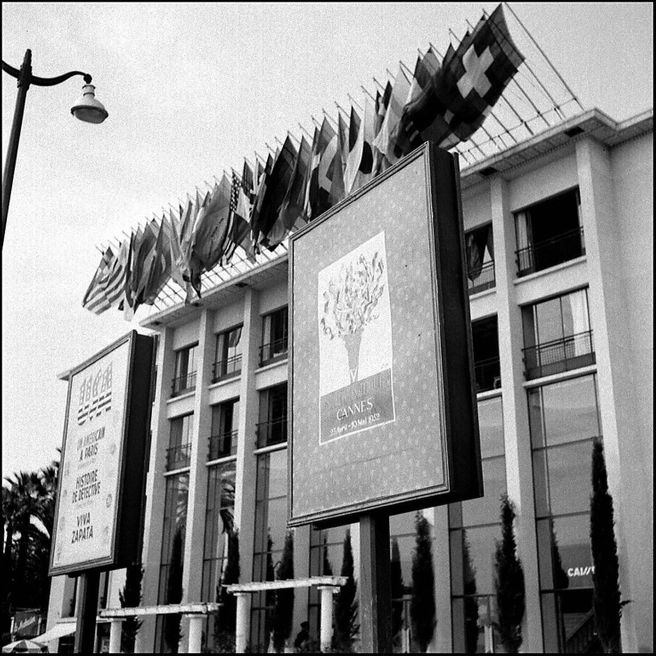
The Palais des Festivals et des Congrès
Towards the end of the 50s, the success of the festival and the growing numbers of visitors obliged the organisers to consider plans to increase the capacity of the Palais Croisette. For lack of funds, none of these projects came to fruition and ultimately the decision was taken to build a new Palais. Incidentally, it was only at that moment that the former Palais des Festivals was renamed ‘Palais Croisette’.
The Palais des Festivals et des Congrès boasted 2,400 places in its Grand Théâtre Lumière, and 1,000 in the Claude Debussy Theatre, plus a press room, a conference room, and several auditoriums and reception areas. The building, nicknamed the Bunker by the accreditation holders, was inaugurated in 1983 and was not a unanimous hit with Festival-goers, still under the charm of the former Palais, as you can hear in this report in which France Roche describes the opening ceremony with great energy:
As time went by, however, the modern and functional facilities of the Palais des Festivals won the day and after several reconversion projects, the Palais Croisette was finally demolished in 1988.
Since its construction, the Palais des Festivals has constantly changed along with the event. In 2000, the Riviera Space, with its 7,000 m2 of exhibition area, has hosted the Marché du Film and makes several screening rooms available to professionals. The Village International hosts the pavilions of around 60 nations who come to promote their film industries around the Palais. Since 2007, the temporary Soixantième Theatre has been organised each year on the roof of the Riviera as a venue for the Special Screenings and Cannes Classics. And from 2009 to 2012, redevelopment and beautification work has taken place at the Palais des Festivals to ensure that the building remains a fitting destination for the 24 legendary red steps.

